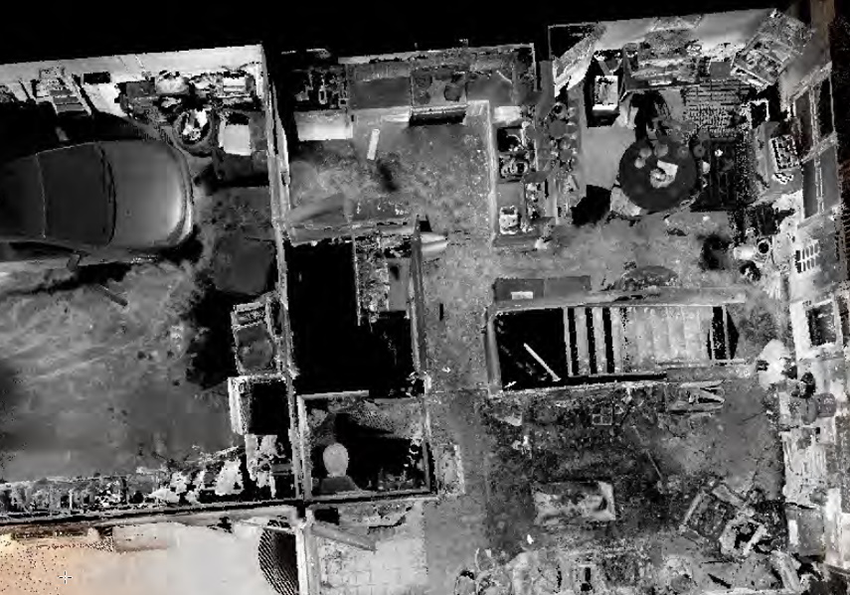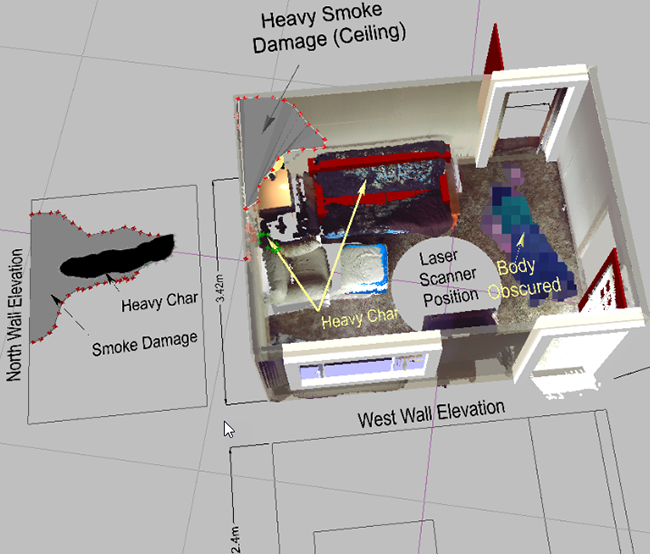Fire Investigation with FARO Technology
Overview
There are two main applications where a fire department should be putting FARO® technology to work:
- Fire investigation
- Pre-incident planning
- Pre-incident planning is further described in this article: Pre-Incident Planning with FARO Technology
In this article, let’s look at fire investigation and see why the FARO solution is incredibly valuable for fire investigators.
To determine the cause and origin of a fire, a fire investigation must be completed with the same care and attention to detail as a crime scene investigation. An added complication is that a fire scene is usually an environment that is very hostile to gathering evidence. It’s typically dark, the fire results in debris everywhere, there may be a risk of structural collapse, and the fire department just drowned the whole scene in water. Any obvious evidence has been burned, buried or washed away.
Fire investigators also risk their health the longer they stay at the scene. Modern homes and buildings contain many synthetic and plastic materials which release a number many hazardous materials and known carcinogens. According to the US National Center for Biotechnology Information, firefighters are significantly more likely to contract and die from cancer than the general public – 70% more likely for some types of cancer1. Many of these carcinogens continue being released as toxic fumes even after the fire is out and the entire time the fire investigator is on site doing their job.
How can a fire investigator be confident they have documented the entire scene while they minimize the time they are exposed to these deadly carcinogens? FARO has the perfect solution – scan the fire scene with a FARO Focus Laser Scanner, then use FARO software to complete the case documentation.

A residential fire scene scanned with a FARO Focus Laser Scanner and registered in SCENE software.
Here are some of the benefits of scanning a fire scene with the FARO Focus:
- Preserve the entire scene as a 3D point cloud in less than half the time it would take to measure manually. Share the digital scene with others so they can virtually walk through and see every detail.
- Get out of the hazardous environment sooner, take any measurements using the point cloud from the safety of your office
- Don’t be hampered by a dark scene – scan even in the dark to record the scene as a clear, accurate, gray scale point cloud.
- Be assured the Focus is up to the task - its IP54 rating allows it to function in tough environments like a fire scene.
- Use the FARO built-in digital signature (hashing) to prove the authenticity of the scans captured at the scene.
- Open the point cloud in FARO Zone 3D Advanced to create accurate diagrams, place labels and measurements, label the extent of charring and smoke damage.
- Use FARO Zone to create a 3D fly-through of the site for use in court or walk through the scene in Virtual Reality.

The NFPA 921, Guide for Fire and Explosion Investigations, recommends investigators create wall elevation diagrams to show smoke damage and charring. This is easy to do in FARO Zone 3D Advanced, using a scanned point cloud of the scene.
Don’t take FARO’s word for it. Here are two interesting articles where investigators confirm the benefits of using laser scanning for fire investigation:
- Mystery Solved: How 3D Laser Tech Cracked the 36 Pit Fire (frtinvestigation.com)
- How laser scanning improves fire and explosion investigations (firerescue1.com)
Reference: Cancer Incidence and Mortality among Firefighters: An Overview of Epidemiologic Systematic Reviews - PMC (nih.gov)

